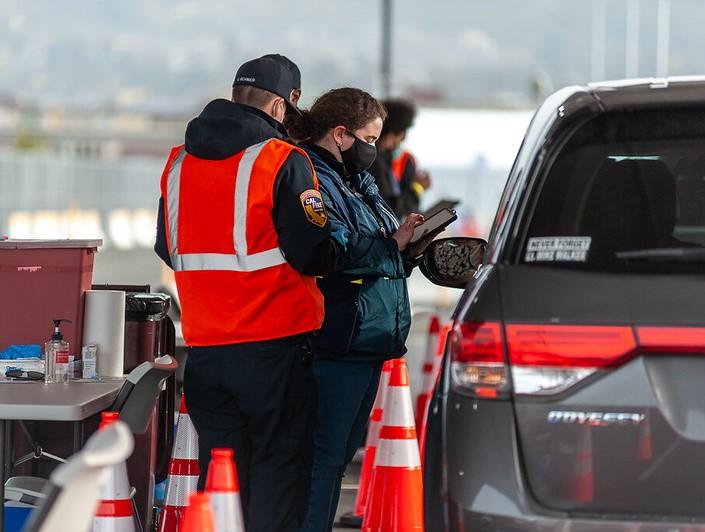Today in Morbidity and Mortality Weekly Report, a study analyzing vaccination data in 81 communities in Los Angeles County finds that the vaccine had a greater impact on COVID-19 infections in lower-income communities than in their higher-income counterparts.
The study looked at three surges of COVID-19 activity, two before vaccines were widely available (July 2020 and January 2021) and the third after vaccines became widely available (September 2021).
Vaccination and infection data on a total of 5,083,093 people, with a median community population of 47,450 were included in the study.
To understand how vaccination impacted communities, the authors calculated the adjusted incidence rate ratios (aIRRs) during the peak month of each surge and compared the ratios across communities grouped by median household income percentile.
There was a significant difference in risk ratios between high- and low-income communities in the two surges before widespread vaccination: The aIRR between communities in the lowest and highest median income deciles was 6.6 (95% confidence interval [CI], 2.8 to 15.3) in July 2020 and 4.3 (95% CI, 1.8 to 9.9) in January 2021.
Disparity in infection incidence disappeared by fall 2021
But that gap shrunk by September 2021, when the aIRR was 0.80 (95% CI, 0.35 to 1.86).
"During this surge, vaccination coverage was lowest (59.4%) in lowest-income communities and highest (71.5%) in highest-income communities (p<0.001). However, a significant interaction between income and vaccination on COVID-19 incidence (p<0.001) indicated that the largest effect of vaccination on disease incidence occurred in the lowest-income communities," the authors explained.
The study adds to a growing body of literature that shows that COVID-19 disproportionately affected low-income US communities at the beginning phase of the pandemic.
The largest effect of vaccination on disease incidence occurred in the lowest-income communities.
"These disparities were mitigated during the third pandemic surge, after COVID-19 vaccines became widely available," the authors wrote. "Although vaccination coverage was inversely associated with disease incidence during the third surge in all income groups, the estimated impact of vaccination on COVID-19 incidence was largest in the lowest-income communities."
The impact was likely greater in low-income communities because they had higher population density, greater use of shared public transportation, and a population that had a higher likelihood of working service jobs that could not be completed remotely.
In conclusion, the authors wrote, "Reducing barriers to vaccination in lower-income communities, including providing updated (bivalent) COVID-19 vaccine boosters, is critical to reducing disparities in disease impact, and decreasing COVID-19–related illness in the United States."











